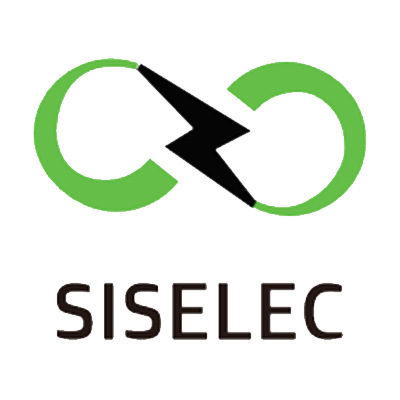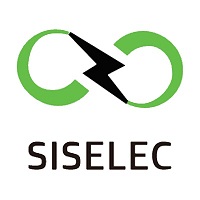- Beyond the Assembly Line: Latest automotive news signals a turning point for sustainable mobility and consumer choice.
- The Rise of Electric Vehicles and Battery Technology
- Government Regulations and Incentives
- The Impact of Emission Standards
- Financial Incentives Driving Adoption
- Changing Consumer Preferences and Market Trends
- The Future of Automotive Manufacturing and Supply Chains
- Supply Chain Challenges and Resource Management
- The Reshoring and Nearshoring of Production
Beyond the Assembly Line: Latest automotive news signals a turning point for sustainable mobility and consumer choice.
The automotive industry is undergoing a dramatic transformation, and current industry reports and market analyses – often disseminated through various channels of information, particularly those reporting on recent industry shifts – signal a pivotal moment for both sustainability and consumer preferences. These ongoing developments, frequently highlighted in specialized publications, point to a news future where electric vehicles (EVs) aren’t just a niche option, but a mainstream choice. This evolution is driven by stricter environmental regulations, advancements in battery technology, and a growing demand for eco-friendly transportation solutions. The rapid pace of innovation is reshaping the landscape, influencing manufacturer strategies and redefining the consumer experience.
The Rise of Electric Vehicles and Battery Technology
Electric vehicles are rapidly gaining traction, propelled by ongoing advancements in battery technology. Improvements in energy density and charging speed are addressing key consumer concerns, making EVs increasingly practical for everyday use. The cost of batteries, a significant factor in the overall price of an EV, is also decreasing, further enhancing affordability. Several manufacturers are investing heavily in research and development, aiming to create batteries that offer longer ranges, faster charging times, and improved safety. This commitment to innovation is directly impacting the viability of EVs as a mainstream transportation option.
| Lithium-ion | 250-670 | 30-60 minutes | 130-180 |
| Solid-state | 500-800 | 15-30 minutes | 80-120 (projected) |
| Lithium-Sulfur | 2600 | 60-120 minutes | 70-100 (potential) |
Government Regulations and Incentives
Government regulations are playing a crucial role in accelerating the transition to electric vehicles. Stringent emission standards are pushing manufacturers to invest in cleaner technologies, while incentives such as tax credits and subsidies are making EVs more accessible to consumers. Several countries and regions have announced plans to phase out internal combustion engine (ICE) vehicles altogether, setting ambitious targets for EV adoption. These policies are creating a supportive environment for the growth of the EV market and encouraging innovation in sustainable transportation.
The Impact of Emission Standards
The implementation of increasingly strict emission standards is forcing automobile manufacturers to rethink their product strategies and prioritize the development of electric and hybrid vehicles. Regulations like those found in Europe and California are compelling automakers to reduce their carbon footprint and invest heavily in research and development of cleaner technologies. These standards often involve penalties for exceeding emission limits, incentivizing manufacturers to innovate and produce vehicles with lower emissions. The ripple effect of these policies is a faster transition towards a more sustainable automotive industry.
Financial Incentives Driving Adoption
Financial incentives, such as tax credits, rebates, and subsidies, are significant drivers of EV adoption. These programs lower the initial cost of purchasing an EV, making them more competitive with traditional gasoline-powered vehicles. Some governments also offer incentives for the installation of home charging stations, further encouraging EV ownership. These financial carrots are critical in overcoming the price barrier that has historically hindered widespread EV adoption, promoting a shift by consumers towards eco-friendly transportation solutions. Moreover, incentives aren’t limited to consumers; manufacturers often receive support for investment into electrifying their fleets and the development of associated technologies.
Changing Consumer Preferences and Market Trends
Consumer preferences are evolving, with a growing demand for sustainable and technologically advanced vehicles. Interest in electric vehicles is rising, driven by concerns about climate change, air quality, and fuel costs. Consumers are also attracted to the performance benefits of EVs, such as instant torque and quiet operation. The automotive market is responding to these changing preferences by introducing a wider range of EV models, catering to diverse needs and budgets. This consumer shift, combined with ongoing technological advancements, is creating a positive feedback loop driving the growth of the EV market.
- Increased awareness of environmental issues
- Rising fuel costs and desire for cost savings
- Advancements in EV technology (range, charging speed)
- Growing selection of EV models
- Positive user experience: quiet operation, instant torque
The Future of Automotive Manufacturing and Supply Chains
The shift to EVs requires significant changes in automotive manufacturing and supply chains. Traditional automotive suppliers need to adapt to the changing demands of the EV market, investing in new technologies and capabilities. The demand for battery materials, such as lithium, cobalt, and nickel, is increasing, creating both opportunities and challenges for resource extraction and processing. Automakers are also diversifying their supply chains to reduce dependence on single sources and ensure a stable supply of critical components. This transformation of the automotive supply chain is essential for supporting the continued growth of the EV market.
Supply Chain Challenges and Resource Management
The surging demand for battery materials – lithium, cobalt, nickel and manganese, for example – presents complex supply chain challenges. Securing a stable and ethical source of these materials is paramount, given the geographical concentration of their mining and processing. Concerns about environmental impact and labor practices associated with resource extraction require comprehensive solutions. Automakers and governments are actively pursuing strategies such as investing in recycling technologies and establishing partnerships with responsible mining operations to mitigate these risks. A transition towards a circular economy, where materials are reused and recycled, is critical for building a sustainable EV industry.
The Reshoring and Nearshoring of Production
Geopolitical instability and disruptions caused by events like global pandemics have prompted a reevaluation of automotive supply chains. Many manufacturers are exploring opportunities to reshore or nearshore production, bringing manufacturing closer to end markets. This strategy aims to reduce transportation costs, improve supply chain resilience, and create local jobs. Investments in domestic battery production facilities and EV component manufacturing are key elements of this trend. Continuous innovations in automation, robotics, and 3D printing will further enhance the competitiveness of reshoring/nearshoring initiatives.
- Establish diversified sourcing strategies for critical materials.
- Invest heavily in battery recycling infrastructure and technologies.
- Promote ethical and sustainable mining practices.
- Build strategic partnerships with resource-rich countries.
- Diversify manufacturing locations through reshoring and nearshoring.



